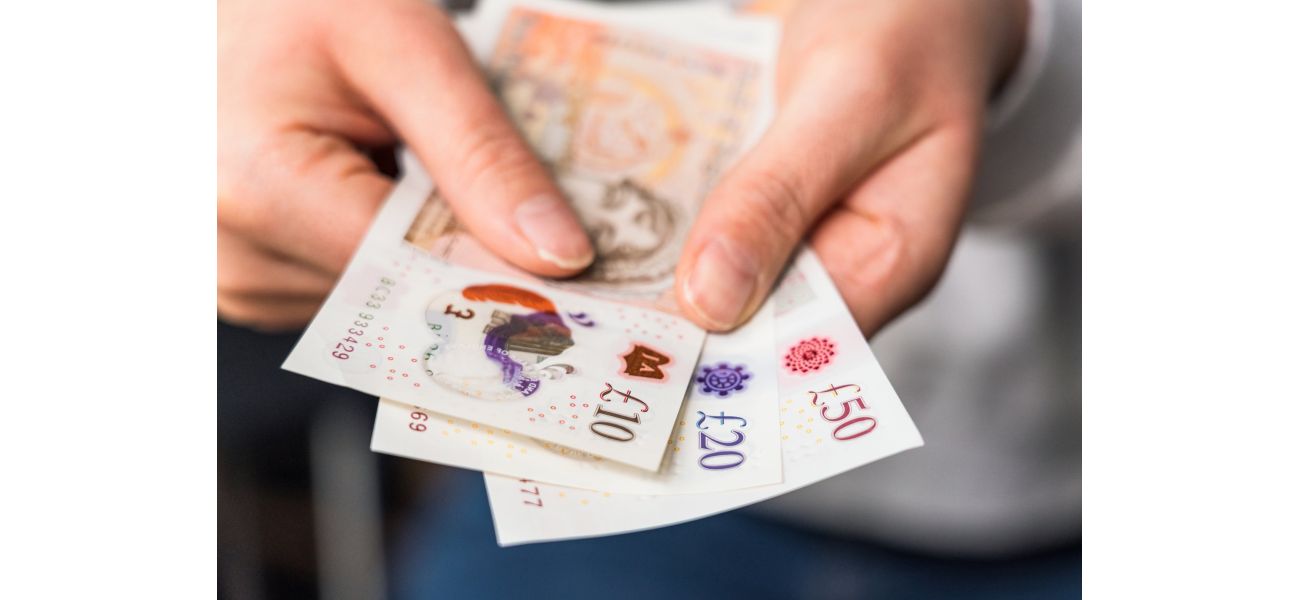Learn how to identify counterfeit banknotes with these five simple tips.
Scammers are promoting fake money on social media.
September 16th 2024.

In recent years, the UK has made a significant change in its currency by switching from cotton-paper to polymer notes. This move was aimed at making it more difficult for counterfeiters to produce fake banknotes. But have you ever wondered how easy it is to spot a fake banknote from a real one? According to the Bank of England, in 2023, only 0.0025% of the 4.6 billion banknotes in circulation were counterfeit. This means that around £2.5 million worth of fake notes were circulating among the £82 billion worth of real ones.
However, despite the efforts to prevent counterfeiting, fraudsters are finding new ways to sell their fake banknotes. They are now using social media platforms like Instagram and Facebook to advertise and sell their counterfeit currency. Shockingly, they are offering deals as low as £1,000 for fake notes worth £10,000. Mario Van Poppel, CEO of currency exchange firm Manor FX, expressed his disbelief at the boldness of these criminals. He stated that they are taking advantage of the wide reach and anonymity provided by social media and the internet.
This situation poses a significant risk not only to individuals who fall prey to these scams but also to businesses and the overall economy. In the past, the Bank of England had to take action by printing banknotes on polymer instead of cotton-paper due to the rising concern of counterfeit money. Experts believe that these fraudsters are targeting people who are in financial difficulty by offering bulk deals on social media.
If you happen to be a victim of this scam and end up with worthless counterfeit cash, unfortunately, the Bank of England will not reimburse you. Moreover, you may even face criminal charges, even if you were unaware that the money was fake. It is advised to hand over the notes to the police as soon as possible. But how can you differentiate between a real and fake banknote?
One of the first things you can do is feel the note. You may have noticed a difference in the texture when the banknotes switched to polymer. Real banknotes have a distinct crisp and firm feel, with areas of raised ink for the denomination and important symbols. On the other hand, fake notes may feel smoother, waxy, or less crisp. Additionally, holding a banknote to light should reveal a watermark embedded into the paper. However, counterfeit notes may have poor imitations or no watermarks at all.
Another feature to look out for is the holographic strip on modern banknotes. This strip changes color and reflects light when viewed from different angles. If the strip on your note is dull and does not act the same way, it is most likely fake. Apart from these, there are hidden features on UK banknotes that glow in UV light, which are not present or are less sophisticated on counterfeit notes.
You should also check for any blurs or smudges on the banknote. Authentic banknotes have clear and sharp numbers, logos, and borders, even under a magnifying glass. However, fake notes may have blurs and smudges, indicating that they were produced with lower quality printing.
Mr. Van Poppel believes that counterfeiters are targeting people in financial difficulties, who are more likely to believe that the scam will work. He expressed his concern over the fact that these criminals are boldly advertising on social media and taking advantage of vulnerable people. He warned that while these ads may offer a dangerous fantasy, they can land buyers in a lot of trouble.
When brought to their attention, Facebook and Instagram, owned by Meta, stated that fraudulent activity is not allowed on their platforms and they have removed the content. They are continuously investing in new technologies to tackle this issue and encourage people to report such activity to them and the police. The Bank of England is also aware of online accounts advertising fake money and has warned people not to attempt to purchase these items as they are often cases of deceptive fraud. These "adverts" may be seen on social media, marketplaces, and forums.
However, despite the efforts to prevent counterfeiting, fraudsters are finding new ways to sell their fake banknotes. They are now using social media platforms like Instagram and Facebook to advertise and sell their counterfeit currency. Shockingly, they are offering deals as low as £1,000 for fake notes worth £10,000. Mario Van Poppel, CEO of currency exchange firm Manor FX, expressed his disbelief at the boldness of these criminals. He stated that they are taking advantage of the wide reach and anonymity provided by social media and the internet.
This situation poses a significant risk not only to individuals who fall prey to these scams but also to businesses and the overall economy. In the past, the Bank of England had to take action by printing banknotes on polymer instead of cotton-paper due to the rising concern of counterfeit money. Experts believe that these fraudsters are targeting people who are in financial difficulty by offering bulk deals on social media.
If you happen to be a victim of this scam and end up with worthless counterfeit cash, unfortunately, the Bank of England will not reimburse you. Moreover, you may even face criminal charges, even if you were unaware that the money was fake. It is advised to hand over the notes to the police as soon as possible. But how can you differentiate between a real and fake banknote?
One of the first things you can do is feel the note. You may have noticed a difference in the texture when the banknotes switched to polymer. Real banknotes have a distinct crisp and firm feel, with areas of raised ink for the denomination and important symbols. On the other hand, fake notes may feel smoother, waxy, or less crisp. Additionally, holding a banknote to light should reveal a watermark embedded into the paper. However, counterfeit notes may have poor imitations or no watermarks at all.
Another feature to look out for is the holographic strip on modern banknotes. This strip changes color and reflects light when viewed from different angles. If the strip on your note is dull and does not act the same way, it is most likely fake. Apart from these, there are hidden features on UK banknotes that glow in UV light, which are not present or are less sophisticated on counterfeit notes.
You should also check for any blurs or smudges on the banknote. Authentic banknotes have clear and sharp numbers, logos, and borders, even under a magnifying glass. However, fake notes may have blurs and smudges, indicating that they were produced with lower quality printing.
Mr. Van Poppel believes that counterfeiters are targeting people in financial difficulties, who are more likely to believe that the scam will work. He expressed his concern over the fact that these criminals are boldly advertising on social media and taking advantage of vulnerable people. He warned that while these ads may offer a dangerous fantasy, they can land buyers in a lot of trouble.
When brought to their attention, Facebook and Instagram, owned by Meta, stated that fraudulent activity is not allowed on their platforms and they have removed the content. They are continuously investing in new technologies to tackle this issue and encourage people to report such activity to them and the police. The Bank of England is also aware of online accounts advertising fake money and has warned people not to attempt to purchase these items as they are often cases of deceptive fraud. These "adverts" may be seen on social media, marketplaces, and forums.
[This article has been trending online recently and has been generated with AI. Your feed is customized.]
[Generative AI is experimental.]
0
0
Submit Comment





